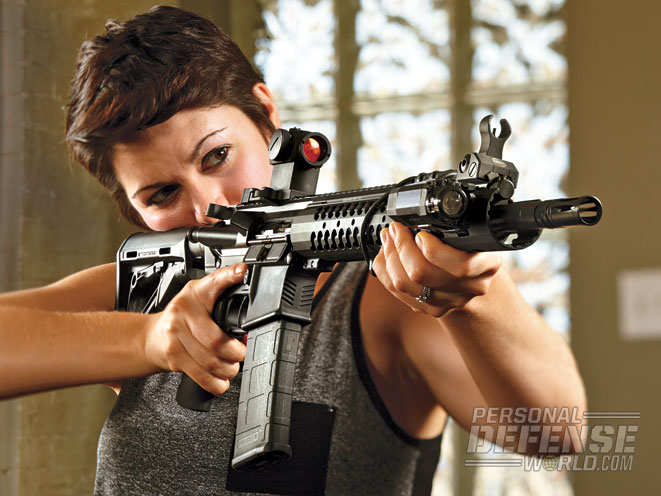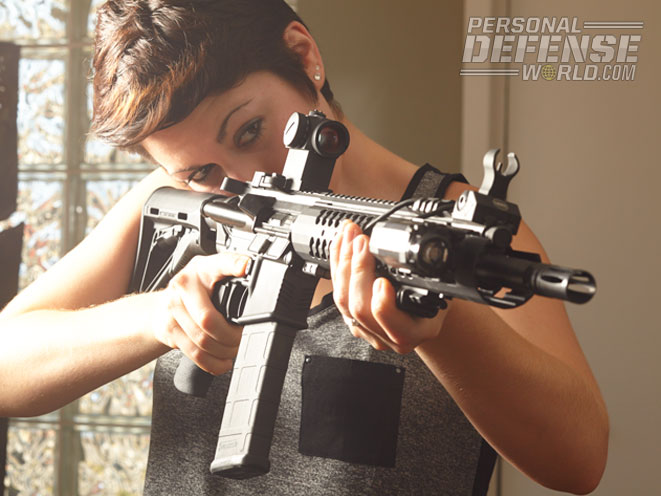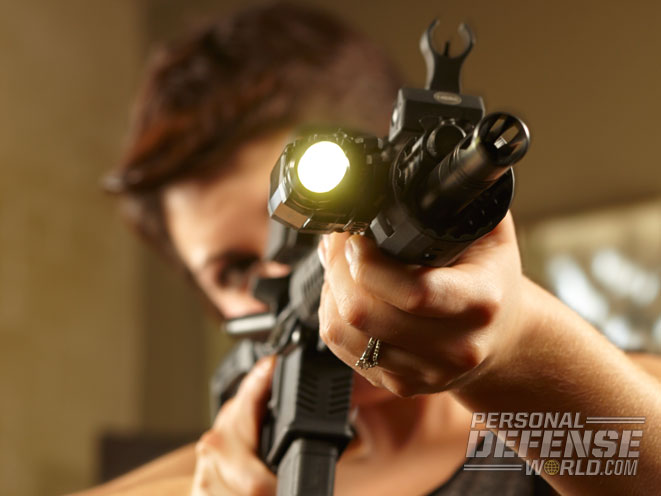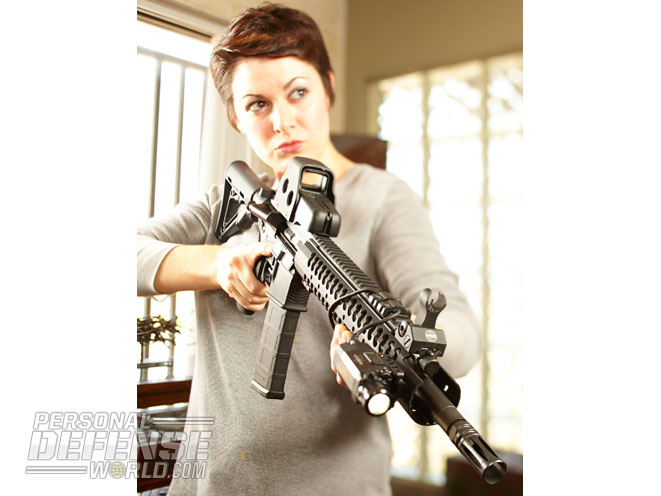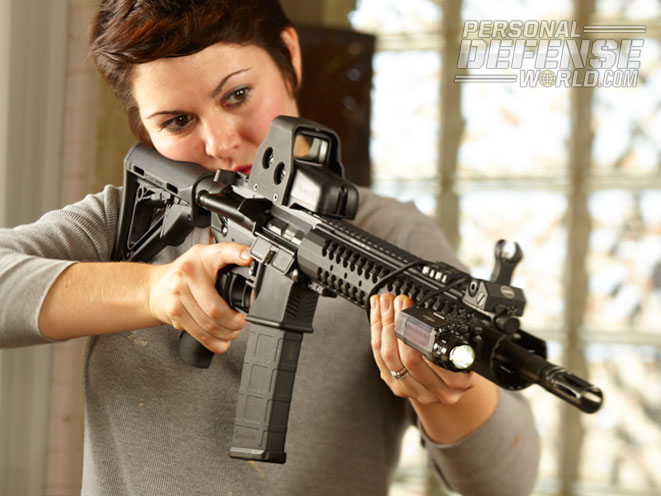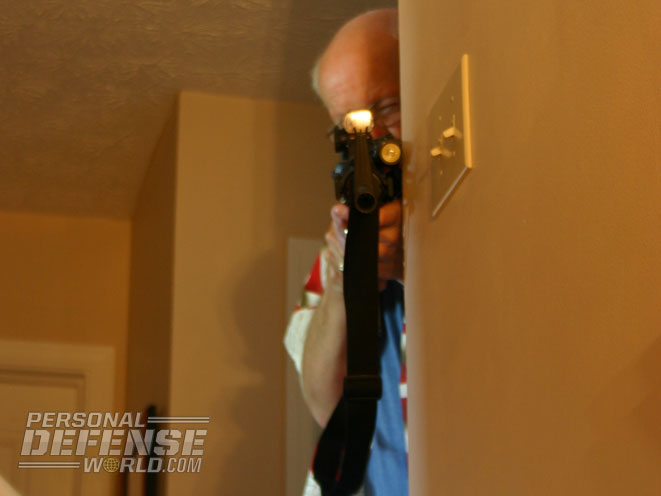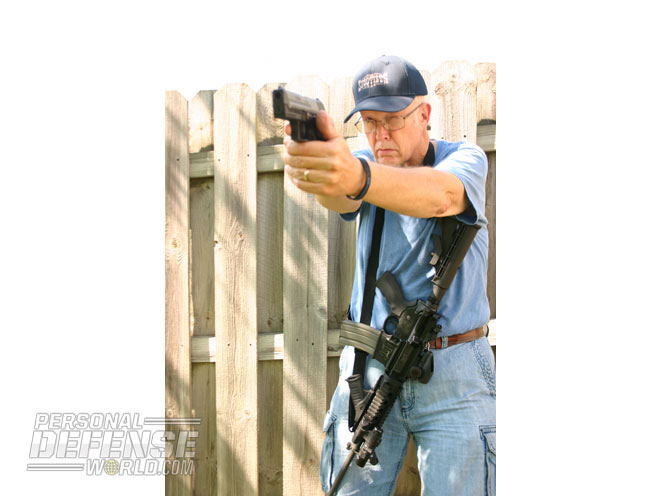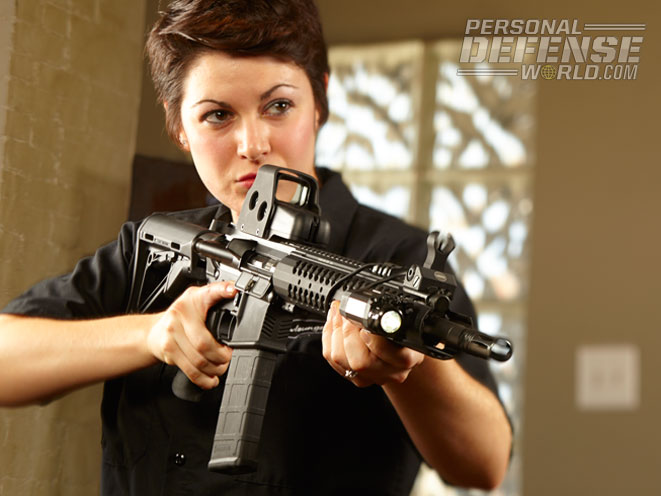I don’t recall the exact jargon, but as a young Army officer I was taught that before conducting an operation you should first come up with an “action plan.”
Contemplating what you will do, why you will do it and the logistics of the operation always provide for a better outcome than charging headlong into something with little conscious thought. I believe the selection of a home defense carbine is one of those subjects that requires some analysis, so I will approach the topic from the perspective of one who has just made the decision to procure such armament. I’m sure many readers already have a carbine of some sort, so keep an open mind and maybe some of my musings will cause you to adjust whatever plan or equipment you are presently using.
Know Your Surroundings
Advertisement — Continue Reading Below
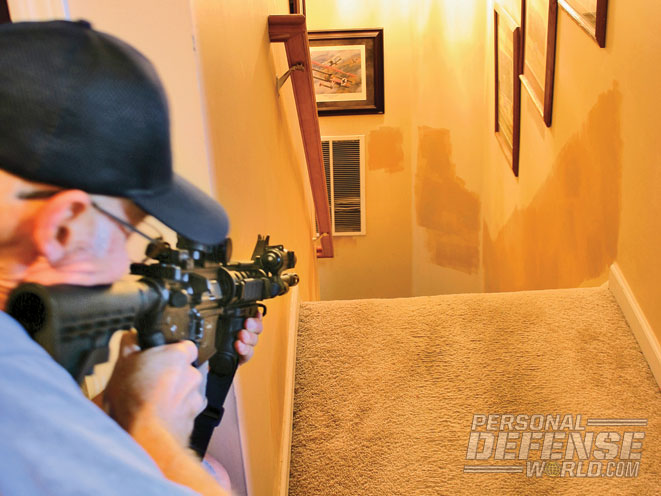
In my opinion, the first question I’d ask myself is, where will I most likely be using this weapon? Your requirements will differ depending on whether you live in an urban, suburban or rural location. Do you reside in a single-family home, a duplex or an apartment? Logically, your real needs will differ depending on whether you live on a ranch in Wyoming or a third-floor apartment in downtown Nashville. If that lonely ranch house offers distance a potential adversary could use against you, your selection may be a carbine/cartridge combination that would allow you to reach out and touch someone at 100 yards and beyond. If in suburbia, the longest shot you might anticipate would be 100 yards or less, and in an urban setting, maybe 50 yards or less. Add to this whether you plan to use the carbine mostly indoors or fire from indoors at a target outside. Is that .308 AR platform really what you need to defend your condo, or would a pistol-caliber long gun, like something in 9mm or .40 S&W, serve you better? These factors might also influence the type of sights you use. Up close and personal in dim light, an electronic dot-type sight might be best. From 200 yards across the barnyard, maybe you should consider a 3-9x scope with an electronic reticle that can be activated in dim light.
RELATED: 25 New AR Rifles and Carbines for 2014
You also have to anticipate different scenarios that could be similar no matter what your living circumstances are. Even inside your cabin in the woods, when you hear that bump or maybe crash in the night, is that scope-sighted 6.8 SPC going to let you do what needs to be done? In your abode, are you typically upstairs or downstairs? Where are the likely entrance points for threats in relation to where you might be when you will have to engage them with your carbine? How many people live in your residence and where are they? Do you have a safe room?
Advertisement — Continue Reading Below
Yes, I know, that’s a lot of questions. But if your home defense .223 carbine has a 30-round magazine, can you afford not to think these things over in advance when you have two kids in adjoining bedrooms or neighbors who live in a house 20 feet from your bedroom wall? Not to play these scenarios through your head is to court tragedy. Any pro sports player will tell you that the key to winning is this mental exercise that you go through in your mind, visualizing the potential “what if” scenarios.
Penetration & Ammo
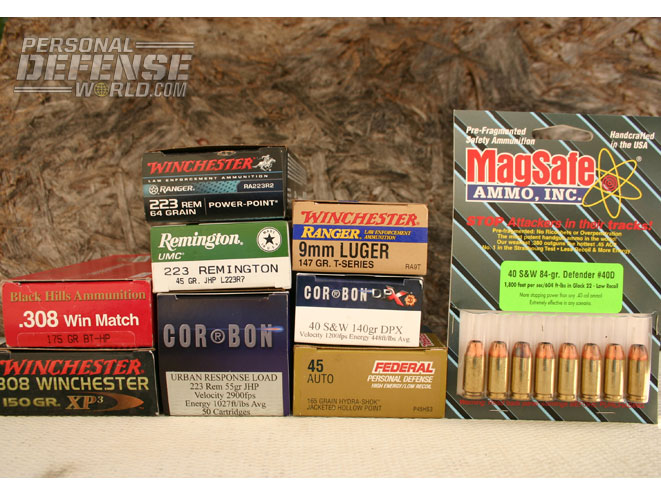
Advertisement — Continue Reading Below
This topic ties in with environment to some extent. What do you anticipate your carbine will be used for? Is it going to be your primary defensive weapon or will it be relegated to a more secondary backup role? In either case you will again have to think about the circumstances of its use. If used against a “bump in the night,” who or what is in the immediate area? And what kind of penetration does the weapon’s cartridge possess?
As we considered the possibilities of which sight to use, we will also want to consider the caliber and type of ammunition for your carbine. If I’m defending that ranch house way out west, I’m thinking a 150- to 180-grain soft-point bullet for wind-bucking ability and penetration. How about a backup magazine with some “ball” ammunition in case the adversary is using a vehicle or building for cover? In a suburban situation with that .308 AR, maybe a lighter bullet like the Hornady 125-grain TAP load would be a choice. Maybe .223/5.56mm would be a better choice. For long distance, a boat-tail hollow point (BTHP) in a 62- to 75-grain weight might be a good choice. For closer in, you might consider a 45- or 50-grain HP varmint-type load. If you’re looking at strictly urban use, maybe you should select a pistol-caliber carbine. The options in 9mm, for instance, include a 115-grain full metal jacket (FMJ), a 124-grain JHP +P or a 147-grain JHP for range and penetration.
RELATED: Top 6 Shotguns for Home Security
Advertisement — Continue Reading Below
Recent events will dictate some of your selections. Will your carbine be used to defend your home or business following some disastrous circumstance? Everyone has seen the images from the LA Riots or the aftermath of Hurricane Katrina, where citizens had to defend their turf because law enforcement was stretched too thin or couldn’t reach their locale. What would you want for a situation involving rioters or looters? Would it be much different from a survival situation where roving groups are looking to deprive you and your family of your shelter and stores of provisions? What will be your fields of fire and probable distances? I’m definitely thinking large ammunition capacity and extra loaded magazines, but will your combination meet the challenge? Once again, I’ve posed a lot of questions, but only you can give them a thoughtful response and act accordingly.
Tactical Add-Ons
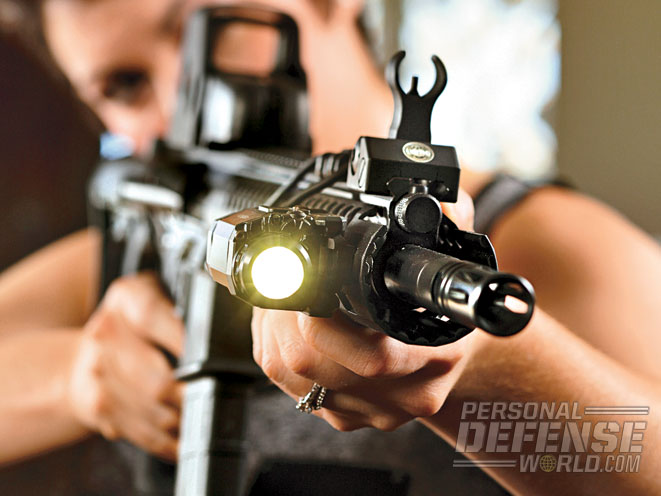
How will you be using your carbine? Will the shooting be done from inside a structure, from the interior of a vehicle, or from the topside of a boat? These considerations will also dictate the size and configuration of your carbine.
Advertisement — Continue Reading Below
Do you want a gun that is short and light, that enhances maneuverability? Do you want something heavier and steadier for better accuracy? Maybe a combination? Will it be dark to the point where you would want an attached tactical light? Will the shooting be up close, fast and furious? Would a laser sight be a good choice to let you concentrate more on target identification and less on sight placement, all while adding the intimidation factor of the red or green dot? Oh yeah, red or green? One works better in dim light (red), the other in brighter light conditions (green).
Do you really want a weapon festooned with gadgets that add bulk, weight and will catch on things? A tactical sling will also let you drop your carbine and transition to a handgun while retaining your long gun. Do you want a lightweight barrel? Lots of steel or a hybrid of steel-and-alloy construction? A collapsible buttstock is both handy and versatile. What about a lever-action or pistol-caliber carbine that can use the same cartridge as your handgun? Is that 10-shot .357 Mag lever gun really obsolete combined with an eight-shot DA revolver in the same caliber that you can load with moon clips? Even the old M1 Carbine is still a good contender.
Ready To Defend
Advertisement — Continue Reading Below
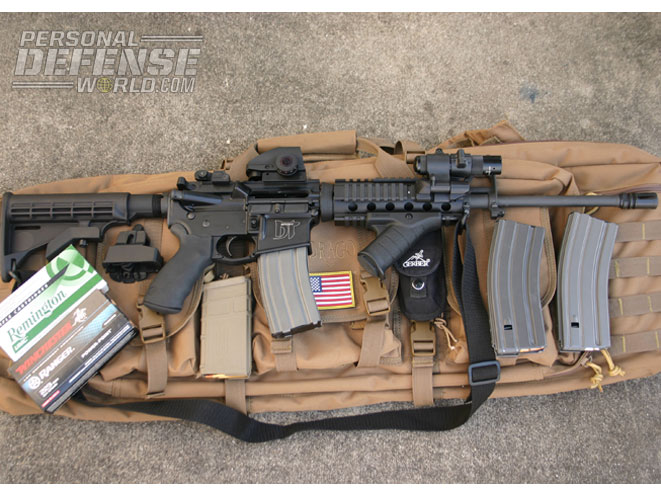
Okay, I’m done playing devil’s advocate. Have I provided enough material for you to think about? What you need are tools in your self-defense toolbox. If you have a plan, then you will have something to fall back on. Will you use these techniques to make a conscious decision on what carbine you may choose to protect yourself, your family, your property or others?
RELATED: Best New Tactical Rifles and Carbines for Fall 2014
Advertisement — Continue Reading Below
For my own analysis, I looked at where I live—suburbia. Surrounding homes are anywhere from 10 to 50 yards away if I have to defend against adversaries on the outside perimeter. Cover for the “bad guys” includes small to medium-sized trees and some motor vehicles on the curb, plus some lots have pine-plank privacy fences. I live in a two-story, single-family dwelling with a monitored burglar alarm; the bedrooms are upstairs and that’s where my carbine is. Home invaders of whatever kind will find we have retreated upstairs. The corner will give them some concealment, but that’s about it. My carbine is a .223 in a lightweight, sporter version with a 16-inch barrel, collapsible buttstock and CAR-15-type forend. It has a red/green variable dot sight, backed up with iron sights that co-witness through it. My 30-round magazine is stuffed with 55-grain HP “urban LE” loads, and I have a magazine of 55-grain FMJs and three others with more “urban LE” cartridges. All this plus two boxes of lighter cartridges. That’s my solution for a home defense carbine. What’s yours?
